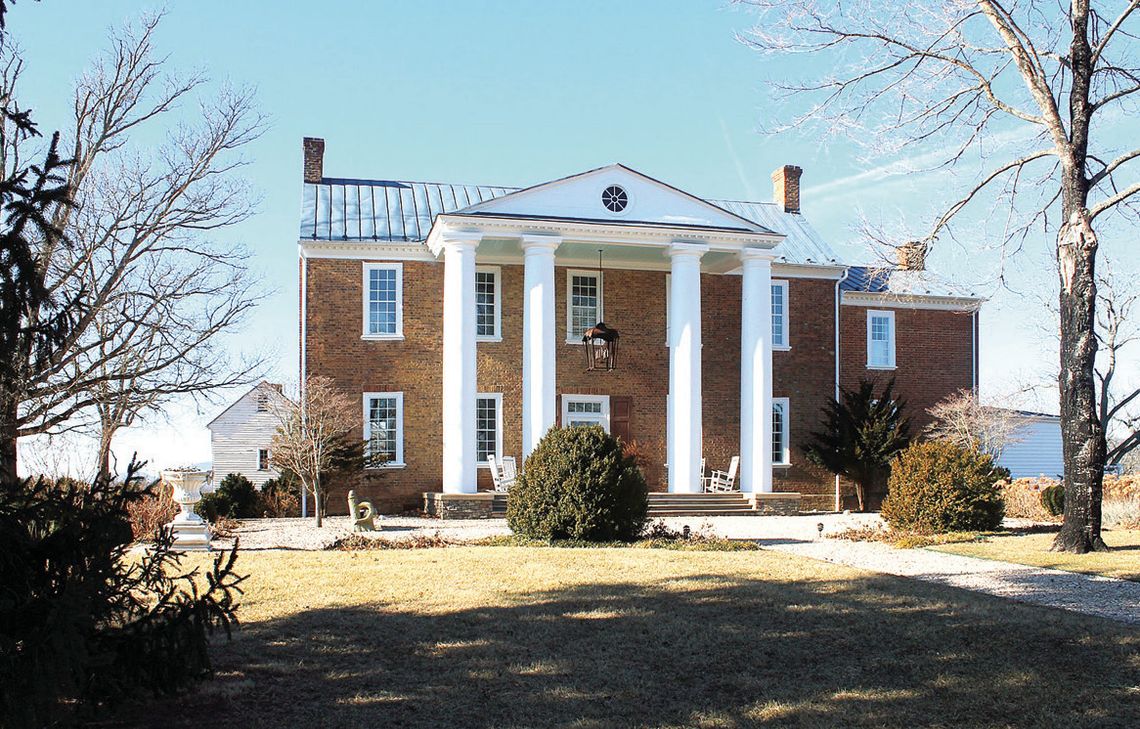Presentation, Walk, Exhibits Highlight Local Women’s History
Editor’s note: The following article was written by Rockbridge Historical Society Executive Director Eric Wilson, with contributions by RHS board members who are jointly guiding this year’s tour.
On Saturday, March 23, from 2 to 3:30 p.m. the Rockbridge Historical Society invites children, students and area residents of all ages to join in an intergenerational “Talk-and-Walk” capping Women’s History Month.
Now in its fifth annual variation, this interactive and newly illustrated event will feature RHS board members illuminating distinctive if often little-known individuals and patterns that have shaped Rockbridge, and the United States, across the arc of four centuries.
Last year’s theme focused on education and civic leadership, with a particular focus on the 20th century. This year, an opening slideshow in the library’s Piovano Room will set the stage with a broader kaleidoscope providing an inclusive variety of visual cues that will anchor the mobile presentations that follow.
Those illustrations will also prompt questions that attendees might more informally ask during the half-hour’s walking tour that follows. That group stroll, stopping at different interpretive “Story Stations” along Main Street, will conclude with a reception at the RHS Museum (101 E. Washington St.), and a final opportunity to see its displays on “Rockbridge Women’s Histories.”
Female Founders And Families
One “leading lady” featured in the event was a local Rockbridge trailblazer, her life reaching across the 18th century, and from Ireland to the British colonies, the American Republic, and the formation of Rockbridge County. Yet Magdalene Woods Mc-Dowell (1712-1783) remains lesser-known than other iconic men who regularly feature in the canons of our county’s early years.
A momentous event in Rockbridge history occurred in 1737, when Benjamin Borden walked into the campsite of the McDowell family. Ulster Scots by way of Pennsylvania, the small family group was looking for land in the Valley of Virginia. John Mc-Dowell agreed to survey the Borden tract and in return, his family received the first Borden grant – 1,000 acres.
The generational legacies of that family, in Virginia and beyond, are extraordinary. RHS President Larry Spurgeon, who will talk about one of the matriarchs, Magdalene Woods McDowell, describes her as the “most interesting woman in local history.” Her brothers settled south of Lexington - Woods Creek is named for them. She was described as a famous beauty, was widowed in 1742 when John was killed in a conflict with the Iroquois, and married twice more, her second husband none other than Benjamin Borden Jr.
The legend that Magdalene lived past 100 is not true, but during her eventful life she presided over two of the bestknown estates in Rockbridge – Red House south of Fairfield, and Thorn Hill on Collierstown Road. She was the wife of one Revolutionary War colonel, John Bowyer, and the mother of a second, Samuel McDowell. Samuel chaired the Kentucky state constitutional convention, and was the state’s first f ederal j udge. S amuel’s son, Dr. Ephraim McDowell, came to be considered one of America’s greatest surgeons, another of Magdalene’s many influential grandchildren.
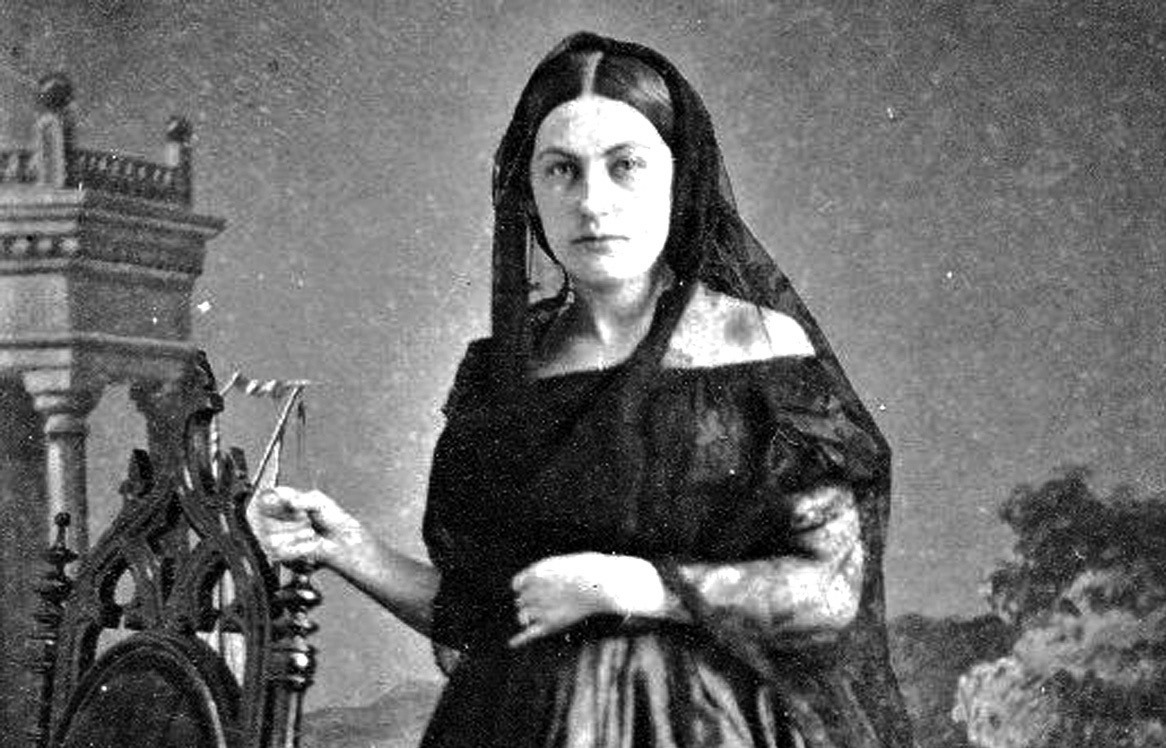
JESSIE ANN BENTON FREMONT, born in Rockbridge in 1824, would write her way to national renown as a noted abolitionist, suffragist, environmentalist, and memoirist, chronicling her own journeys and causes, as well as those of her husband, California Senator and U.S. General John C. Fremont.
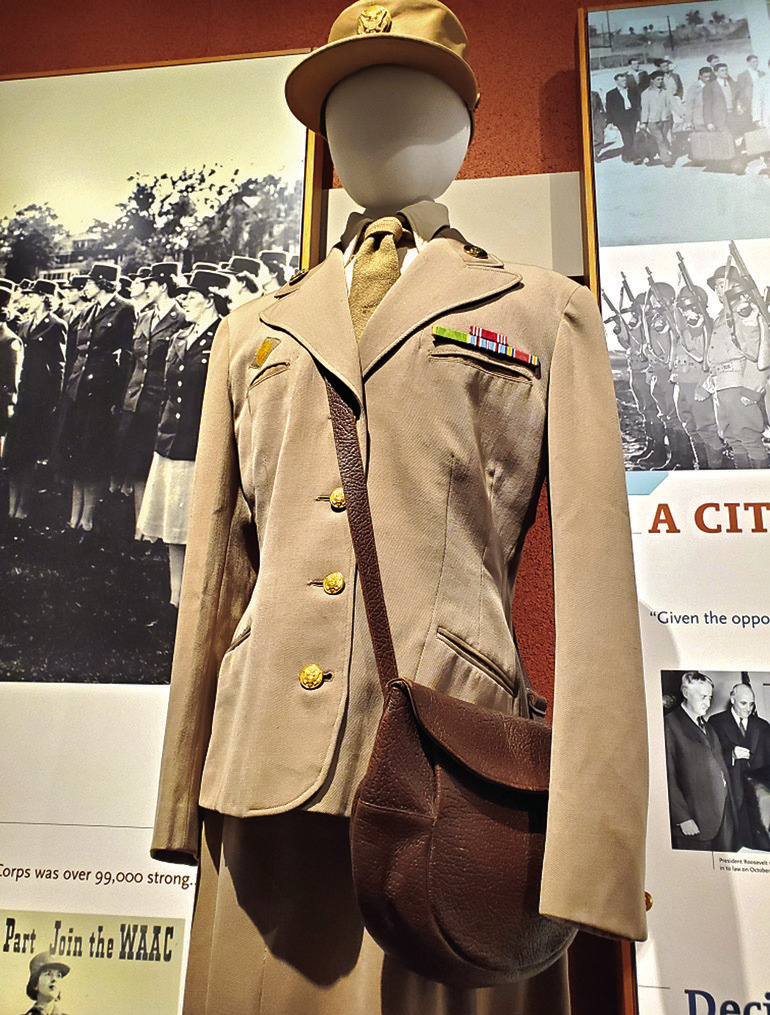
THIS WORLD WAR II WACS Air Corps uniform, which can be seen at the RHS Museum after the Women’s History talk and tour, was donated by the family of Doris Hafle (Lexington High class of 1933), who also wore it at her wedding.
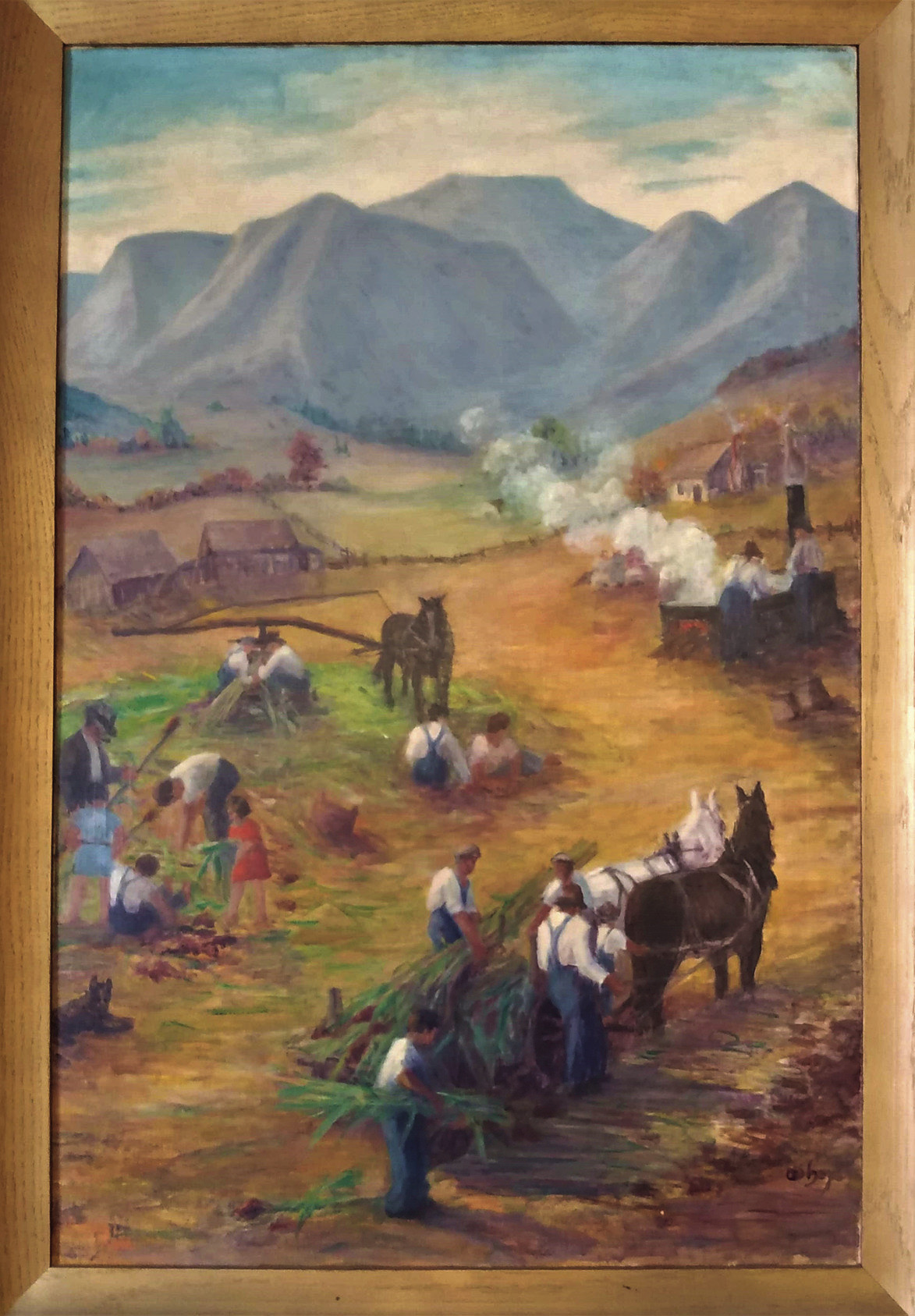
LOCAL ARTIST Margaret Hoyt’s “Sorghum Making” (1937) depicts the range of women’s and men’s work necessary to harvest and render this important regional 19th and 20th century crop. On display at the RHS Museum, her oil study was prepared for the government’s post office mural program during the Great Depression.
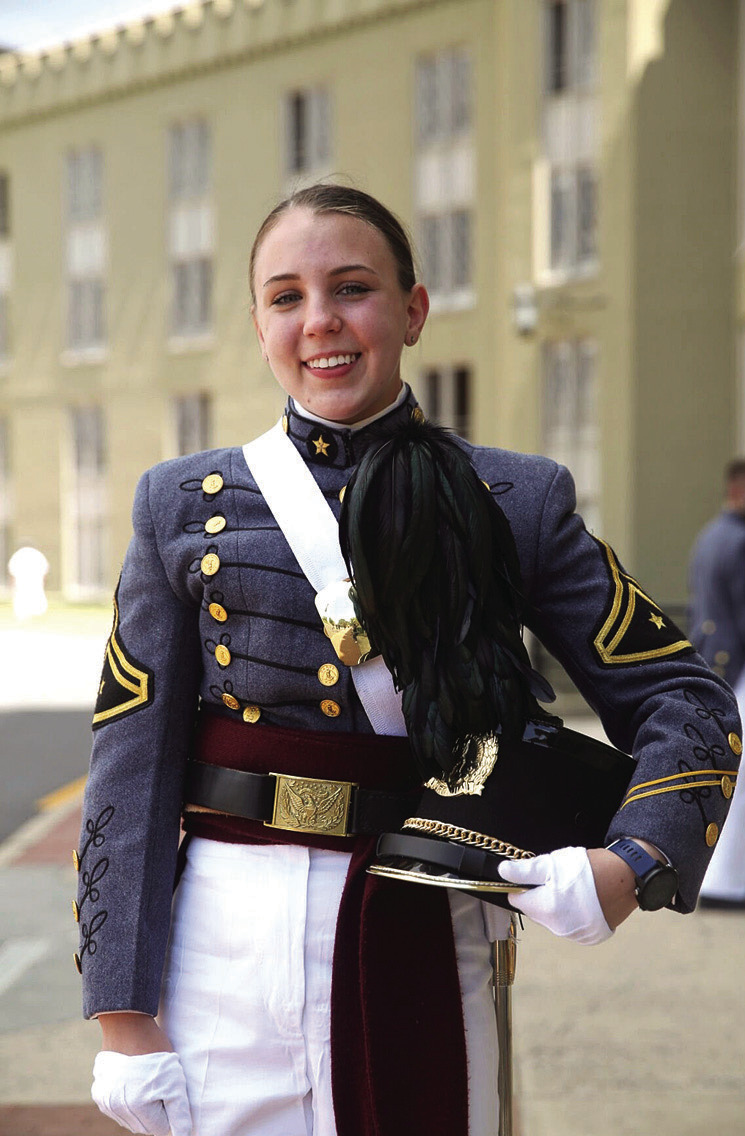
IN 2021, VMI cadet Kasey Meredith ’22 was named regimental commander of the corps of cadets, the first woman to hold that position in the school’s 182-year history.
Spurgeon will chronicle the arc of Magdalene and her family’s life, just before the tour departs from the library at 3 p.m. The walking tour will then head to its first stop at Wells Fargo Plaza. There, other sidewalk paver stones (grounding RHS’ self-guided tour of the Righteous and Rascals of Rockbridge, virtually accessible at RRRockbridge.org) flag both Mary Elizabeth McDowell Greenlee (1707-1809), and Benjamin Borden (1645-1743).
As Spurgeon will continue to explain, both of them prompt vital connections to women and men who shaped those foundational years here in the mid-tolate 18th century, through and beyond the chartering of Rockbridge and Lexington in the midst of the Revolutionary War.
“You Are Quite The Female Politician” Turning to the heart of the 19th-century, Jessie Benton Fremont (1824-1902) features as one of the most dramatic women featured in Eric Wilson’s opening slideshow. At the library, photos and anecdotes will illustrate scenes from her life, as well as a range of others to be mentioned during the walking tour.
Jessie Ann Benton was born just south of Fairfield at the Cherry Grove estate of her uncle James McDowell, who would serve as governor of Virginia in the 1840s. Jessie was the second child of Elizabeth (Preston) McDowell and Thomas Hart Benton, who had been elected as one of Missouri’s first U.S. senators in 1820, soon recognized as a national voice in the evolving antislavery movement, while also championing the expansionist aims of “Manifest Destiny.”
A Rockbridge native, Jessie was largely raised and educated in Georgetown, precociously involving herself in the literary and political circles of the nation’s capital, and steeped in the views and networks her parents established there and in Missouri. Those skills and habits would variously see her become, over the arc of her 78 years, a noted advocate for slavery’s abolition and for women’s suffrage. A decade before John Muir, she led the first, key push for the preservation of Yosemite lands from logging and development, paving the way, 50 years later, for its inclusion as a national park in 1906.
As a prominent author in late 19th-century California, she also stepped in to jointly ghostwrite many of the expeditionary accounts and memoirs of her husband, John C. Fremont. With a nod to James Fenimore Cooper’s bestselling novel, he would become known as “The Pathfinder to the West” for his 1840s explorations into territories that would soon be incorporated into the United States. He would also be elected as one of the first two U.S. senators from California in 1850, the Republican Party’s first nominee for president in 1856, and a controversial military governor during the Civil War.
Some of Jessie’s most notable appearances in the historical record emerge during the heart of national crisis, and the Civil War. Shortly after Maj. Gen. Fremont was appointed commander of the Department of the West in 1861, he declared martial law. He used that edict to free slaves held by all secessionist rebels in Missouri (while exempting Union-supporting slaveholders in the state, from its military terms).
Facing her husband’s removal from office for that preemptive policy, Jessie headed to Washington herself, to plead his case for restoration, still a year-anda- half before Lincoln’s similarly partial Emancipation Proclamation reshaped the war. Already well-published in the abolitionist cause, she turned directly to President Lincoln. After telling her, “You are quite a female politician,” Lincoln nevertheless defended the dismissal, and his own war policies, saying “It was a war for a great national idea, the Union … General Fremont should not have dragged the Negro into it.” The president later attested to her dramatic flair, saying she “left in anger, flaunting her handkerchief before my face.”
While her personal lobbying and wide-ranging writings would navigate the terrain of high politics, troops on the ground – quite literally – saw value in her lead, as well. As the war dragged on, Union forces operated a clandestine espionage ring named in her honor as “The Jessie Spies.” You’ll have to come to the library slideshow to hear more. But to tease one incident in the Shenandoah Valley, worthy of the big screen: their action behind enemy lines involved a Quaker schoolmistress, a coded message wrapped in a ball of foil, carried in the mouth of a slave who was regularly entrusted to sell produce across the battle lines.
Beyond her own sketches, short stories, and editorials, Jessie Benton Fremont would enjoy a certain literary afterlife, memorialized in biographies and fiction through much of the 20th century, including a sappy historical romance novel, “Immortal Wife.” In 2020, National Public Radio host Steve Inskeep published a joint biography, titled “Imperfect Union: How Jessie and John Fremont Mapped the West, Invented Celebrity, and Helped Cause the Civil War.” While researching his book, Inskeep contacted RHS to elaborate local contexts in Rockbridge County, in preparing his own visit to McDowell family’s estate near Fairfield.
Women Who Served
The group walk’s closing stretch will pause in the green space in Courthouse Square, after passing another range of sidewalk “Story Stones.”
Near the Veterans Memorial, RHS Collections chair Cathy DeSilvey will provide a brief history of women’s military service in the 20th century. She will profile some notable leaders, legacies and allies, along with cues to more local resources in Rockbridge County.
Some of those individuals can be witnessed at the RHS Museum, where artifacts interpret area servicewomen. During the concluding reception, while browsing the Remsburg Gallery’s displays of Rockbridge Women’s Histories, tour participants can learn more about Maude Womeldorf (born in Rockbridge County in 1895, died in Lexington in 1985). Miss Womeldorf served in the U.S. Army Nursing Corps at Walter Reed Hospital from 1943 to 1945, as well as New York City’s Bellevue Hospital and Lexington’s Jackson Memorial Hospital. Over the course of the war, she assembled an impressive array of military service patches that you can see at the museum.
Also on display at Campbell House are the World War II uniform and satchel worn by Doris Coffey Hafle (Lexington High School class of 1933), which she would also and proudly don for her wedding. March 23 will be the last day to see that array of comparatives and contexts, before RHS prepares for its next exhibit on “Rockbridge Textiles,” opening this summer, and paying further tribute to women’s work and community traditions.
Connecting national, state and local institutions, DeSilvey’s overview reaches beyond the impact of distinctive individuals. She also credits collective social movements by emphasizing, “The Women’s Army Corps (WACS) enabled women to work in administrative and intelligence roles during World War II. And while the 1948 Women’s Armed Services Act officially gave women the chance to serve their country, military academies did not enroll women until the 1970s, with VMI holding out until 1997.”
DeSilvey’s survey also highlights opportunities for local community members and students to appreciate just how important women’s service to the nation has been. “The George C. Marshall Library and Archive contains many stories of WACS, as well as the Cryptography Collection of pioneering codebreaker Elizebeth Friedman, and information on Anna Rosenberg, Marshall’s assistant secretary of defense for Manpower and Personnel,” she said.
Across the parade ground, a timely set of displays installed at VMI’s Preston Library echoes many of these themes through April. An exhibit on the “Military Mapping Maidens” spotlights the World War II cartographers known as the 3M girls. And for some recent, local histories, you can also explore some of the firsthand interviews with alumni who contributed to last year’s anniversary interpretations of “VMI’s 25 Years of Women.”
As DeSilvey concludes, “For nearly three decades now, the self-selecting young women who have chosen to attend the Virginia Military Institute have challenged the institution to equitably meet their needs, to deploy their talents, and to appreciate their capacity to sustain and evolve longstanding traditions. VMI’s female graduates have continued to carry their confidence, drive, and focus into careers in the military, arts and sciences, and the corporate world. On our tour, you’ll find out why VMI used the term ‘assimilation’ instead of co-education. And you’ll learn how oftenstubborn institutional commitments to specific customs and rituals created an even stronger, more resilient class of women citizen-soldiers.”
Digital Resources
For deeper dives into some of these locally tied women’s histories – along with many others, and the many men who lived and worked with them – browse the constellation of articles, slideshows and videos linked at RockbridgeHistory. org/rhs-essays. And in the 10 days leading up to our tour, follow on Facebook.com/ RockbridgeHistory and RHS Instagram @RockbridgeHistory for a run of digital images and narrative “teasers” to be serially shared.
.jpg)
